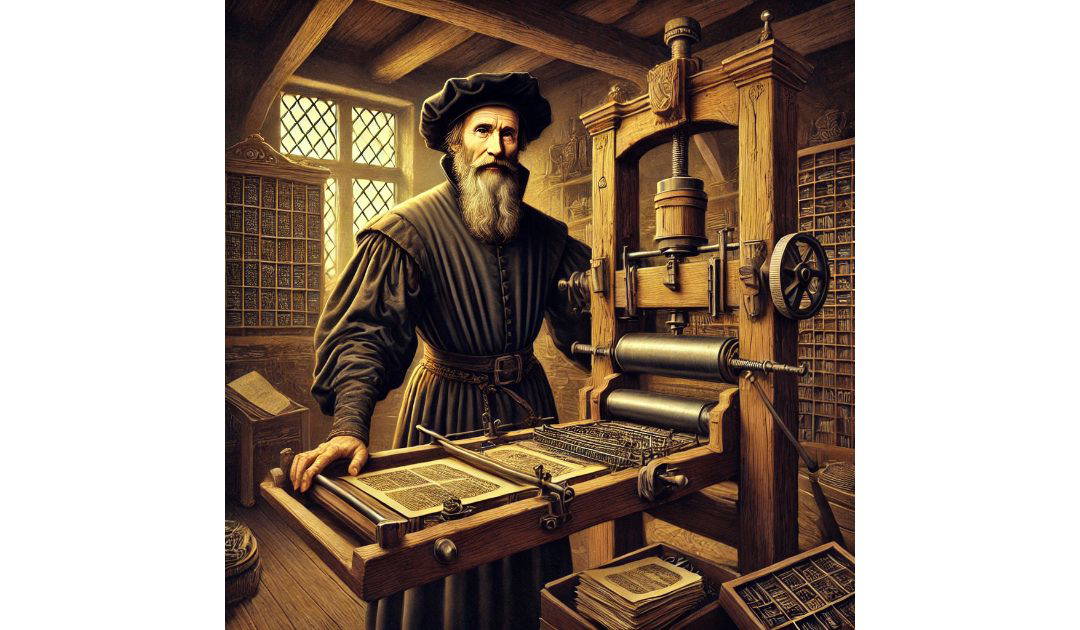On This Day tells me that on the 23rd of February 1455 Johannes Gutenberg printed his first bible. It does add that this is an estimated date.
Johannes Gutenberg (c. 1400 – 1468) was a German inventor and printer who developed the first practical method of printing with movable type. Before his invention, books were laboriously copied by hand, usually by monks in monasteries. This process was slow, expensive, and prone to errors, making books rare and accessible only to the wealthy and the clergy.
Gutenberg’s printing press used metal movable type, which could be rearranged and reused to print multiple copies of texts quickly and efficiently. His innovation dramatically reduced the cost of book production and allowed for the mass distribution of knowledge. The Gutenberg Bible was his masterpiece and the first large-scale demonstration of his printing technology.
The Gutenberg Bible, also known as the 42-line Bible (because each page typically contains 42 lines of text), was printed between 1454 and 1455. It was produced in Latin, following the Vulgate, the standard Bible translation used by the Catholic Church at the time. Scholars believe that approximately 180 copies were printed, around 135 on paper and 45 on vellum (animal skin).
The text was printed in a Gothic typeface, designed to resemble the handwritten manuscripts of the period. Each page was arranged in two columns, similar to traditional manuscript Bibles. Many copies were hand-decorated after printing, with illuminated initials, colorful illustrations, and gold embellishments added by scribes and artists.
The Gutenberg Bible revolutionized the production of books and had far-reaching effects on society. By making books more widely available, the printing press contributed to rising literacy rates in Europe. People outside the clergy and nobility could now access religious and scholarly texts. The mass production of the Bible allowed for wider theological debate, ultimately influencing movements like the Protestant Reformation led by Martin Luther in the early 16th century. The ability to print and distribute books efficiently fueled the spread of new ideas during the Renaissance and later the Scientific Revolution. The printing press reduced copying errors, ensuring more consistent and accurate texts, particularly for religious and scholarly works.
Today, fewer than fifty copies of the Gutenberg Bible survive, with only about twenty complete editions remaining. Some are housed in prestigious institutions such as the Library of Congress, the British Library, and the Bibliothèque Nationale de France. The Gutenberg Bible is considered one of the most valuable books in the world, with individual pages selling for millions of dollars at auctions.
Ultimately, the Gutenberg Bible was more than just a book, it was the catalyst for a revolution in knowledge, communication, and culture. Its legacy continues to shape the way we share and access information today.

